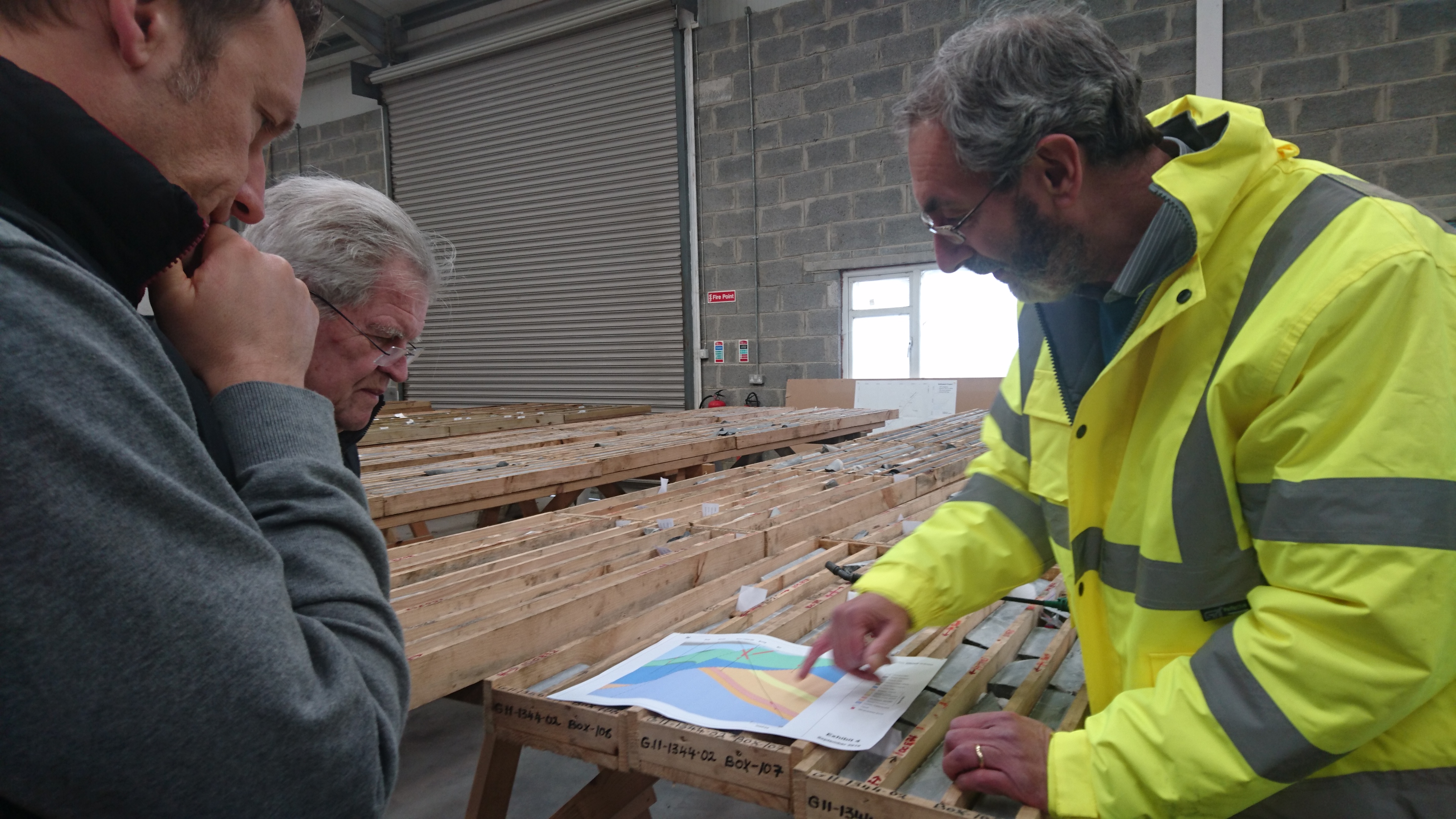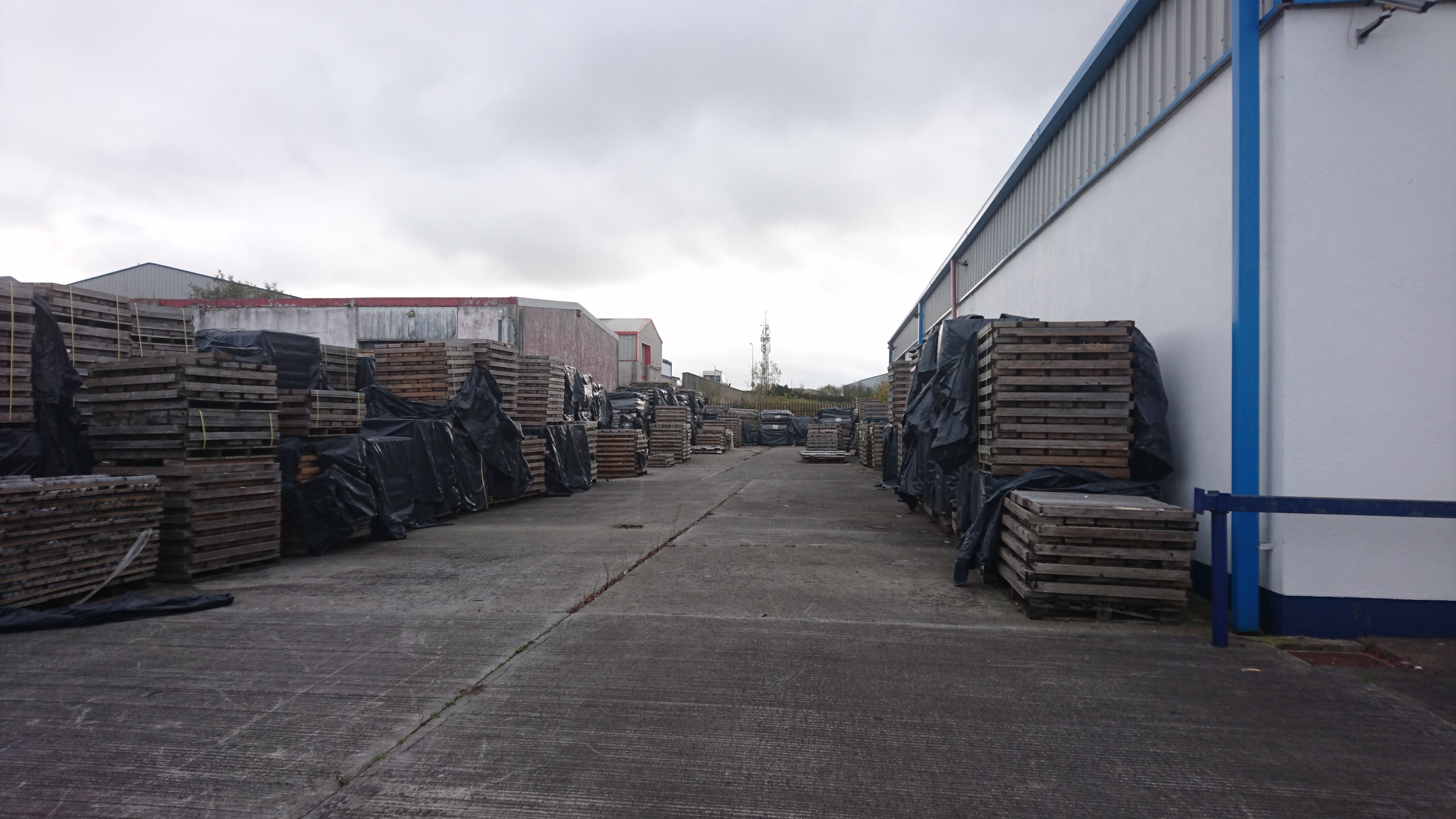Site visit: Group Eleven develops massive zinc-lead projects in Ireland
DUBLIN, IRELAND - Ireland hosts two prospective horizons for zinc-lead mineralization: the Waulsortian limestone zone, and the deeper Pale Beds, also known as the Navan Beds.
Group Eleven Resources (TSXV: ZNG) was sure to emphasize this point during a site visit to three of its zinc-lead projects in Ireland.
The Navan Beds are named after the prolific Navan deposit, which feeds New Boliden's (STO: BOL) Tara mine. In most places there is only one horizon or the other, but the two overlap substantially at Ballinalack.
"If you go too far north or south, you lose one or the other," Group Eleven CEO Bart Jaworski explains from their field office in nearby Mullingar.
At Ballinalack, Group Eleven for the first time is fully compiling all the exploration data other companies generated in the 1970s, 80s and 90s.
Syngenore discovered the deposit in 1970. Oliver Resources tabled a feasibility study for it in 1991. Teck Resources (TSX: TECK; NYSE: TECK) acquired it in 2005, and Zhongjin Lingnam Mining (Nonfemet) (SHE: 000060) paid Teck US$6 million for a 40% interest in 2009. As a result, Group Eleven has access to more than 93,000 metres of drilling, of which nearly 64,000 metres is historic. Teck drilled 29,400 metres. Group Eleven estimates more than $30 million have already been invested in the project by its previous owners. It was arduous to pull together all the key data. The work history is complex.
Historically, companies have focussed on mineralization in the Waulsortian limestone; however, Group Eleven believes the Navan Beds may host a second, deeper deposit, right underneath it.

Staff (right) at Group Eleven's core shack discusses Ballinalack's geology with company CEO Bart Jaworski (left) and writer Bob Moriarty (center). Photo by Richard Quarisa.
Group Eleven chief operation officer David Furlong first came up with the idea. The company would go on to find a 1980s report by a BHP Billiton (LON: BLT) geologist suggesting the possibility of stacked deposits, as well. No one has yet drilled deep enough in the right spots to find out.
"We now know previous attempts were drilling too far away from the Ballinalack fault," Jaworski says.
The company has now identified four targets in the Navan beds it plans to follow up with future exploration. It's drilled two holes into two of those targets, confirming they are prospective and worthy of follow up work.
As John Barry, Group Eleven's vice president of exploration strategy, says, the company is "questioning everything" about the geology at Ballinalack.
"The cross faults look like they might have a lot more to do with mineralization than previously thought," Jaworski adds. "The cross faults were hitherto ignored - what if there's a thickening and higher grade against them? Nobody has yet drilled in the proper orientation to test this theory."
Group Eleven picked up the project from Teck in July 2017 for $2.5 million in cash and $1 million in shares. Group Eleven's Chinese partner Nonfemet contributes and maintains a 40% interest in the project. Nonfemet is one of China's largest zinc producers.

Outside Group Eleven's Mullingar core shack, where the company has amassed all the previous core from Teck drilling at Ballinalack. Photo by Richard Quarisa.
"We are in a fortunate position," Jaworski says. "We are already working with a zinc concentrate consumer."
Ballinalack lies 14.5 km from the town of Mullingar and 50 km west of the town of Navan and New Boliden's mine. New Boliden acquired Tara in 2004. In 2017, it produced 2.3 million tonnes grading 5.9% zinc and 1.1% lead for 239,000 tonnes zinc and 31,000 tonnes lead. As of the end of 2017, it contained 16.6 million probable tonnes grading 5.7% zinc and 1.4% lead.
Ballinalack has a historic resource of 7.7 million tonnes grading 6.3% zinc and 1% lead.
The arguably more compelling project in Group Eleven's portfolio is Stonepark. It's located near Ireland's third largest city, Limerick, and adjacent to Glencore's (LON: GLEN) Pallas Green deposit, which contains 44.2 million inferred tonnes at 8.4% combined zinc and lead.
In 2007, Teck entered an option agreement to buy 75% of the project from Connemara Mining (LON: CON). It discovered Stonepark in 2007 and Stonepark North in 2009. Group Eleven then acquired the project from Teck. Now Group Eleven owns 76.56% of the project and Connemara owns 23.44% of it. It acquired the project in September 2017 for $2.15 million.
Group Eleven estimates $8.9 million have been invested in the project by Teck and Connemara since early 2007. It has a database featuring more than 57,000 metres of historic drilling, including nearly 55,000 metres by Teck.
The project is located in the Limerick basin, where Group Eleven has amassed a 1,240 sq. km ground position. Despite past activity, no one has yet found its main mineralizing fault.

Group Eleven's Ballinalack project sits amid farmland in the Irish countryside. Photo by Richard Quarisa.
The project contains 5.1 million inferred tonnes grading 8.7% zinc and 2.6% lead for 982 million lb. zinc and 297 million lb. lead.
Group Eleven is in the midst of a 2,000-metre drill program at Stonepark.
"The drilling we're doing right now is to determine the relationships between the faults and the known areas of mineralization," Barry says.
The company theorizes that the known mineralization at Stonepark and Pallas Green may represent only the outer edges of a larger mineralized system. It will use data from the current drill campaign to plan a larger campaign it intends to begin in 2019.
The company's third main zinc-lead project, Silvermines, is located 8 km south of the town of Nenagh, in a region with four formerly producing zinc mines including the historic Silvermines zinc mines which produced roughly 10.8 million tonnes grading 7.4% zinc and 2.7% lead between 1968 and 1982.
Holes drilled by Ennex International at the mine's Cooleen prospect in the early 1990s graded as high as 14.5% zinc and 1.7% lead over 7.32 metres from 391 metres down hole, including 42.9% zinc and 3.7% lead over 1.83 metres from 394 metres down hole.
However, reclamation liabilities, which were transferred to Ennex when they bought the previous operator's subsidiary, ended up stalling the project and Ennex eventually dropped it. The government then continued its own reclamation efforts, taking the project off the market for years. Group Eleven scooped it up when it became available as a brand new license (free of any historic liabilities) - surprised that nobody else had spotted it sooner.

From left to right: Group Eleven vice president of exploration strategy John Barry, 321 Gold writer Bob Moriarty, Group Eleven CEO Bart Jaworski and Group Eleven chief operation officer David Furlong pose in front of a statue in the town of Silvermines while on a site visit to Ireland. Photo by Richard Quarisa.
The Cooleen prospect had not been explored for 20 years. The zone measures 300 metres long by 100 metres wide and hosts four nearby targets. In late 2016, Group Eleven drilled one hole in the area to verify that it's prospective for zinc-lead mineralization.
Group Eleven began 3.5 years ago, but only went public last year. MAG Silver (TSX: MAG; NYSE: MAG) came in a year after Group Eleven formed and took a substantial position, 15.8% basic and 21.4% fully diluted. Teck owns a basic 5.6% interest, 4.3% on a fully diluted basis.
The company claims strong support for mining from the Irish government, which is in the process of running an airborne survey over the entire country. Companies could offer to fund part of the survey and in return have their land prioritized. Group Eleven did just that. It expects to receive results from the survey in early 2019. It will use that data to plan future drilling.
In 2017, the Fraser Institute ranked Ireland No. 1 on its Policy Perception Index and No. 4 for Investment Attractiveness.
Group Eleven began its site visit by telling us the rule of thumb for zinc deposits in Ireland: in order to break-even economically, deposits typically need to contain at least 10 million tonnes grading 10% zinc and lead combined. That's not to say the work stops there, but it does represent a basic threshold the company needs to hit. With a 3,200 sq. km land position - the largest in Ireland - and three core projects, the company has plenty of opportunity to meet that goal.
Shares of Group Eleven are currently trading at 14 ? with a 52-week range of 12 ? to 40 ?. The company has an $8 million market capitalization.